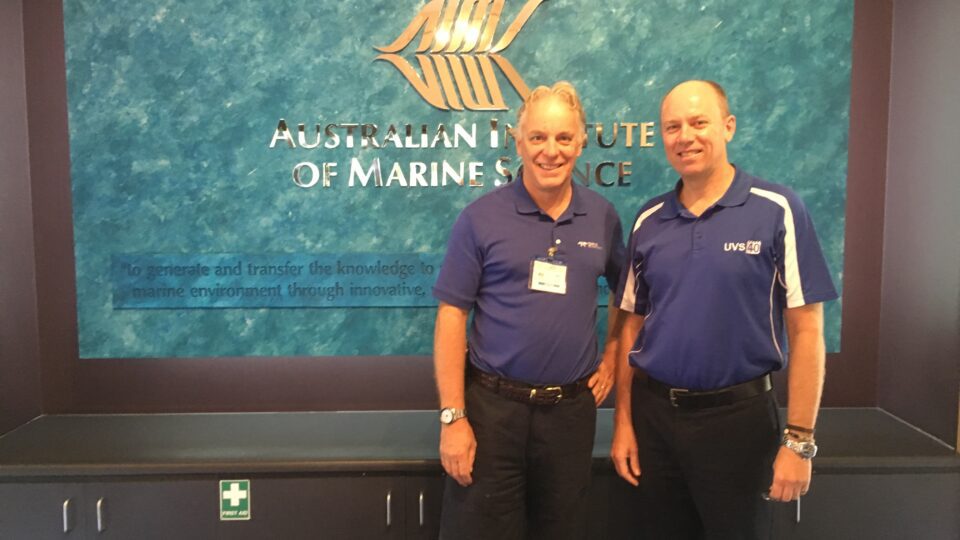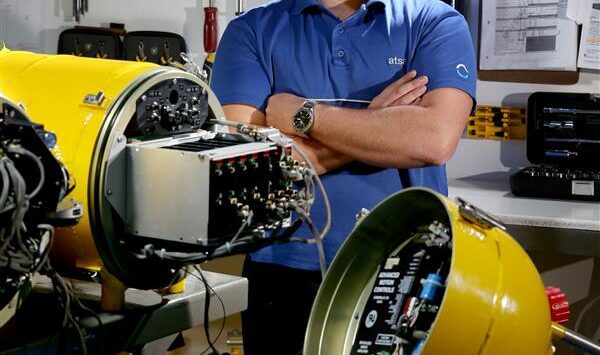Teledyne in Townsville
Teledyne in Townsville
Dr. Pete Spain, Research Scientist at Teledyne RDI, has finally made it to the Australian Institute of Marine Science (AIMS) at Townsville. After more than thirty years in a career in physical oceanography starting at Flinders University in Australia, Pete was joined by BlueZone Group CTO, Darren Burrowes, for an ADCP seminar hosted by Craig Steinberg and delivered to research staff at AIMS.
AIMS is Australia’s premiere tropical marine research agency and plays a pivotal role in providing large-scale, long-term and world-class research that helps governments, industry and the wider community to make informed decisions about the management of Australia’s marine estate.
Since beginning to work with ADCPs in the 1980s Pete has seen the technology develop and improve to suit a wide variety of applications. ADCPs were one of the first technologies to include on board processing of data and the development of broadband technology by RDI had significantly improved data quality and enabled applications such as Doppler Velocity Logs and wave monitoring. RDI ADCPs deployed in Florida were the first to be used to observe changing wave fields during a hurricane landfall.
Craig Steinberg said that AIMS used ADCPs many of the configurations described in the seminar from long term ocean observations from fixed moorings, shipborne and on AUVs. Matt Kenway also gave a tour of the National Sea Simulator (SeaSim) http://www.aims.gov.au/seasim that scientists can research the impact of complex environmental changes with large, long-term, experiments in which they can manipulate key environmental factors including current flow.
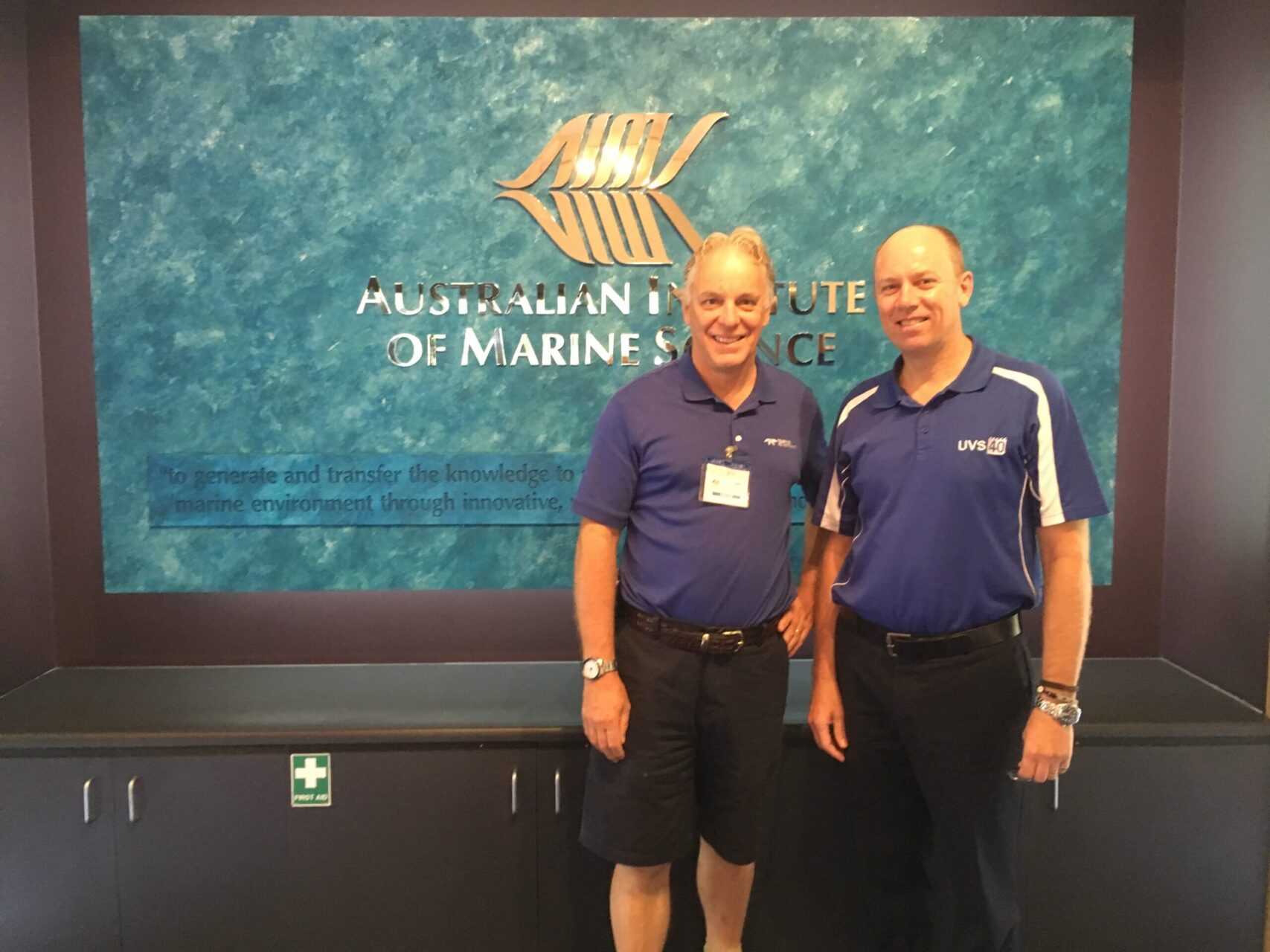 |
| Dr Pete Spain and Darren Burrowes at AIMS in Townsville |
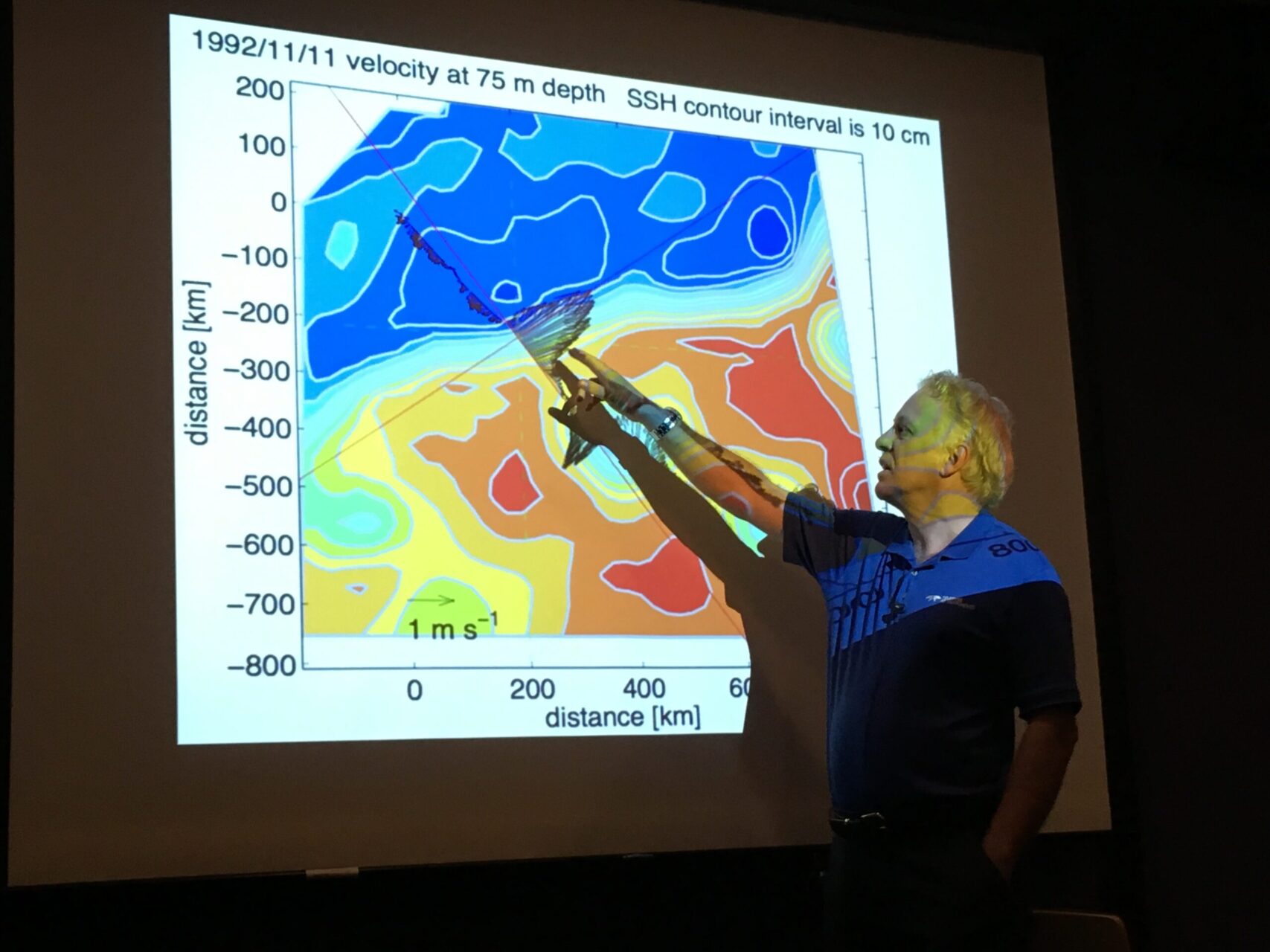 |
| Dr Pete Spain discusses ADCP data recorded from ship transects of the Gulf Stream |
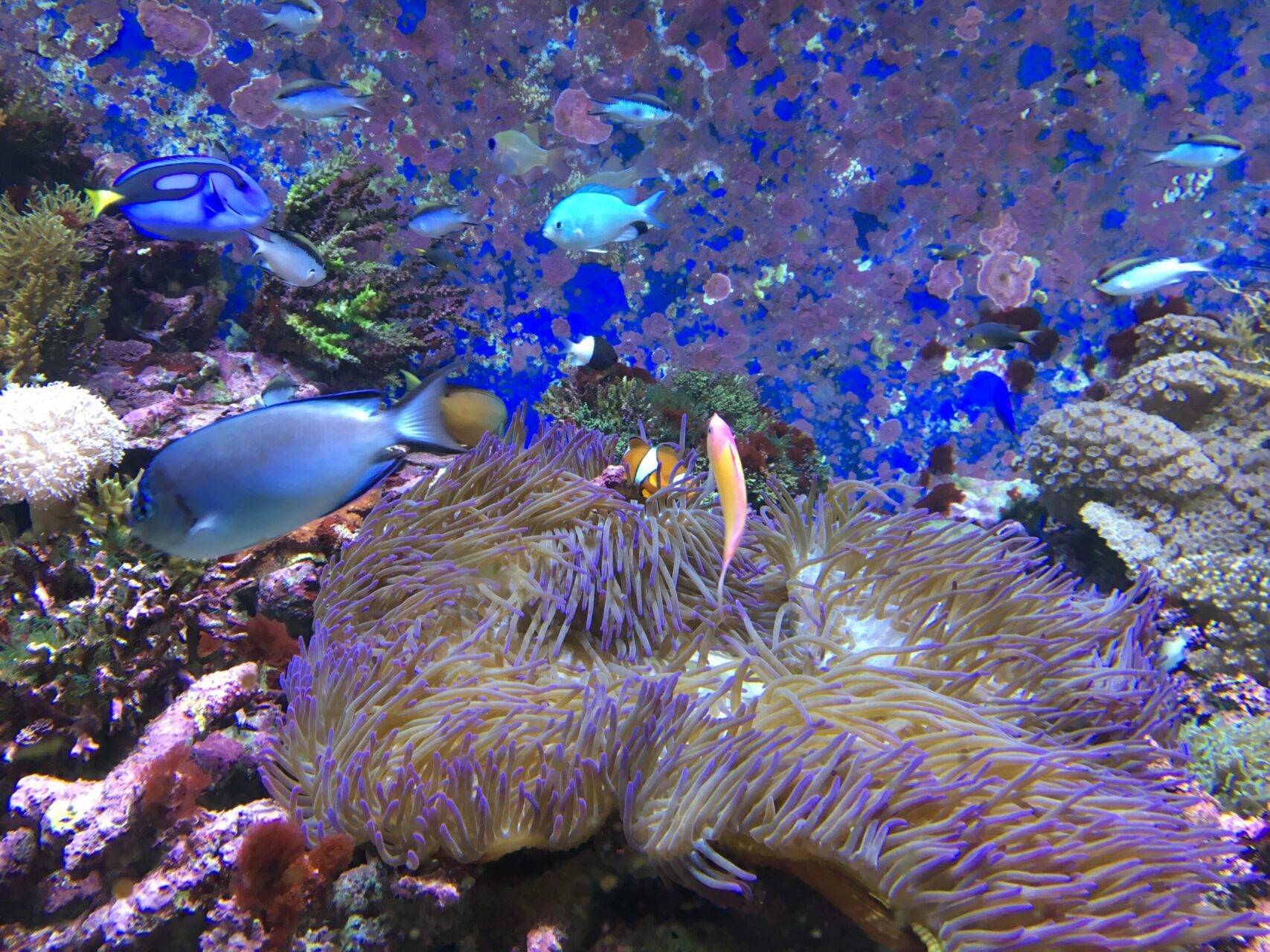 |
| “Nemo” appears in one of the display tanks at SeaSim. A series of tanks provide examples of a variety of environments found on the Great Barrier Reef |

